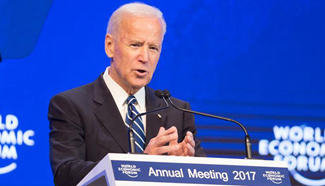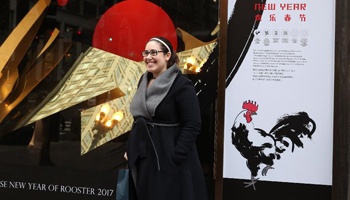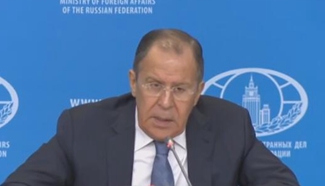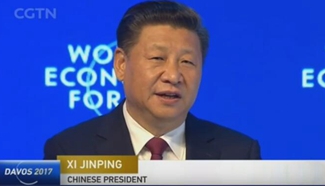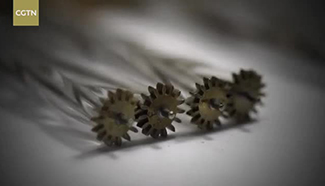CAIRO, Jan. 18 (Xinhua) -- In the heart of Egypt's ancient Islamic capital near Cairo, the National Museum of Egyptian Civilization (NMEC), the first museum of civilization in the Arab world, will partially open within weeks.
The museum will be the only one in the North African country to present the full range of the richness and diversity of Egyptian civilization throughout the ages.
For now, and due to financial difficulties, only one temporary exhibition gallery will be opened soon, with costs estimated at about over two millions U.S. dollars.
The ministry will rely on local and international fund-raising campaigns, as well as profits made by the museum itself, to cover the costs of completing the whole project.
Although only one showroom will be inaugurated, the long-awaited museum still means much with regards to Egyptian and human civilization.
"The museum will focus on intellectual achievements in historical stages of Egypt's ancient civilization," Saeed Mahrous, supervisor-general of the museum, told Xinhua. "The museum will also display rare antiques from the pre-history stage."
Mahrous said it will portray the Egyptian contribution to world civilization in a way that extends beyond what is visible, to include information about knowledge, skills and values.
The museum's 5,000 collections will be displayed in a core permanent exhibition of the principal achievements of Egyptian civilization, with six thematic galleries covering the Dawn of Civilization, The Nile, Writing, State and Society, Material Culture, Beliefs and Thinking and the Gallery of Royal Mummies.
"It will also have temporary exhibition spaces, an auditorium and an education and research center, as well as an exhibition on the development of the modern city of Cairo," the official said.
The museum is built over some 130 acres in the archaeological site of al-Fustat.
It lies to the north of Coptic Cairo, which encompasses the Babylon Fortress, the Coptic Museum, the Hanging Church, the Greek Church of St. George and many other Coptic churches and historical sites.
Its corner stone was first laid in 2002, and construction work started in 2004.
The museum was scheduled to be inaugurated in 2011. However, construction was suspended for some three years after the 2011 revolution which dethroned former leader Hosni Mubarak after his ruling for 30 years.
The museum's cost is estimated at over 80 million dollars that are fully covered by the Egyptian government. However, UNESCO is providing technical support in the construction process.
The museum was designed by Egyptian architect al-Ghazzali Kosseiba and Japanese interior designer Arata Isozaki.
"Its collection will include archaeological and ethnographical artifacts, paintings and jewelry, intangible heritage collection and master pieces ranging from pre-history to nowadays," Mahrous said.
The museum will also act as a venue for a variety of events, including film screenings, conferences, lectures and cultural activities.
"It utilizes state of the art exhibition methods to present innovative and interactive visions of Egyptian civilization, thus connecting the past with the present," Mahrous explained.
Egypt, one of the most ancient civilizations, has been working hard to preserve its archaeological heritage and discover the secrets of the archaeology of Pharaohs and other ancient civilizations across the country.
It's in a bid to revive the country's ailing tourism sector which has been suffering an acute recession over the past few years due to political turmoil and relevant security issues.
The North African country netted just 6.1 billion dollars in tourism revenues in 2015, a drastic downturn from 12.5 billion in 2010, according to the country's Central Agency for Public Mobilization and Statistics.
In an age of globalization, Mahrous added, the museum stands as an educational lighthouse projecting different facets to Egyptians.
"The museum is not only focusing on showing the Egyptian civilization, it will be a pioneering institution in the region; it can thus become a world-wide hub for inter-cultural dialogue," the official said, adding that it is also a national centre for research, conservation, restoration and a secure antiquity storage facility.
Designed as a major attraction for visitors to Egypt, the museum will have an important role to play in raising awareness of modern and contemporary Egyptian history and society, hosting events and temporary displays and exhibitions and providing an important center for the country's youth.
"It is not just a museum. It is a cultural facility showing the cultural, social, economic and artistic evolution of Egypt's 7,000-year-old civilization," Mahrous Sanadidi, the museum's chief archaeologist, told Xinhua as he observed workers setting up shelves in the temporary showroom.
Unlike other museums which show artifacts, Sandidi said, it will view Egypt's intangible heritage through documentaries and multimedia-based tools showing Egyptian daily life traditions, industries, agriculture development and many other cultural aspect.
The official said that the museum will help restore the ailing tourism in Egypt, pointing out that the location of the museum helps make it a tourist attraction.
"The museum is surrounded by many significant tourist and archaeological sites. It is hugged by many ancient monuments as well as Cairo's only remaining lake," he said.


